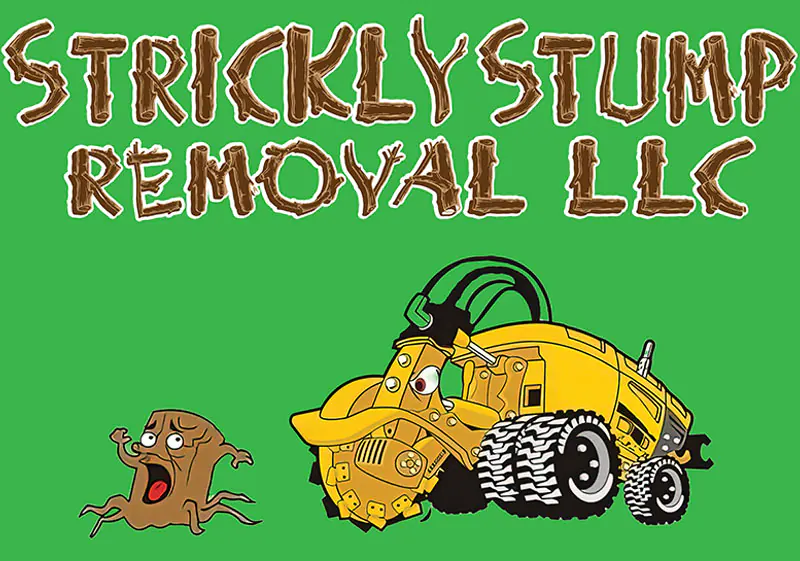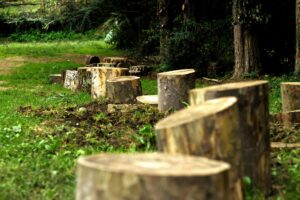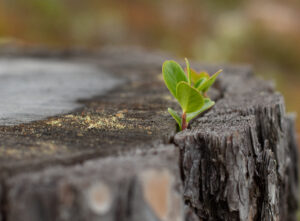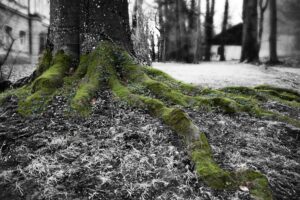If you’ve had to have a tree taken down, you might be curious about whether a tree can grow back from the stump. The short answer is that if the stump is left in situ, trees can regenerate! Even if there is a reduced chance of regeneration after stump grinding, the roots are still intact and may eventually produce sprouts that could turn into trees. There is a slim chance the tree will reappear unless you choose to have the stump completely removed. The probability is contingent upon certain factors pertaining to the type of tree, its root structure, and the state of the soil. We’ll look at the fundamentals of stump grinding and how it relates to tree regrowth in this blog post.
101 Stump Grinding
Stump grinding is the process of grinding down a tree stump below ground level following its removal. Experts in tree care trim the stump using a commercial grinder in sweeping motions until it is sunken a few inches below the surface of the earth. Grinding down a stump does not remove the tree’s roots, in contrast to complete stump removal. Even though a tree cannot grow from its roots alone, the roots can create sprouts that may eventually lead to the growth of a tree.
What Takes Place with Roots Following Stump Grinding?
After grinding the stump, most root systems will begin to break down, although aggressive roots are more likely to grow. This is a result of the living tree roots. Like all living things, trees are tough and will make an effort to live and procreate.
The following circumstances affect the likelihood of regrowth:
Sort of Tree
The roots of most tree species will eventually decay. On the other hand, aggressive tree species will be more likely to emerge. These species include Chinese Pistache trees, elms, poplars, willows, maples, and crepe myrtles. These trees have widely dispersed, horizontal root systems, and some of them are aggressive enough to be classified as invasive. They also have a higher chance of causing issues with neighboring foundations and pipes.
Fertility of Soils
The condition of the soil also influences the likelihood of a tree sprouting back. Crushing and placing the stump in nutrient-rich, undisturbed soil increases its chances of sprouting. Similar to this, loose soil allows roots to spread out farther and increases the likelihood of regrowth.
Basis System
There is a greater likelihood of the root system producing sprouts if the tree is old, completely established, or one of the species mentioned above. This is a result of the roots’ ongoing attempts to keep the tree upright. Additionally, the species determines how deep down the roots go. Native Texas trees, such as oaks and maples, can often have roots that reach a depth of up to 20 feet.
How to Stop a Tree from Growing
Cut off any sprouts that appear at the ground stump’s location at the point where they join the roots or stump. Do not compost the sprouts for later use. Consistently removing the sprouts will eventually cause the roots to deteriorate and weaken.
What Takes Place with the Roots Following Stump Grinding?
To put it simply, yes, the tree can begin to grow back from the residual stump after grinding unless the entire stump and root system are removed as well. However, this process usually takes a long time, so when the tree does begin to grow again, you will have plenty of notice. The tree won’t grow back as rapidly if you take the time to pull off sprouts and green shoots as soon as you see them.
You do need to have the stump completely removed and the root system disturbed if you decide you do not want the tree to grow back at all. It does take a little longer and perhaps more work to accomplish this than just grinding. Hire someone to completely remove the stump and as many roots as possible if you want to make sure the tree won’t grow back.
Conclusion
In order to ensure that the tree will be completely eliminated and unlikely to grow back, you need to hire a professional tree care specialist. If you decide against completely removing the stump, you may still use it as a decorative element for your yard and even get it treated to prevent weather damage. Amazingly, trees can thrive in the most extreme conditions and climates. Speak with an expert if you have a tree that is attempting to grow back, but you would prefer it didn’t.















